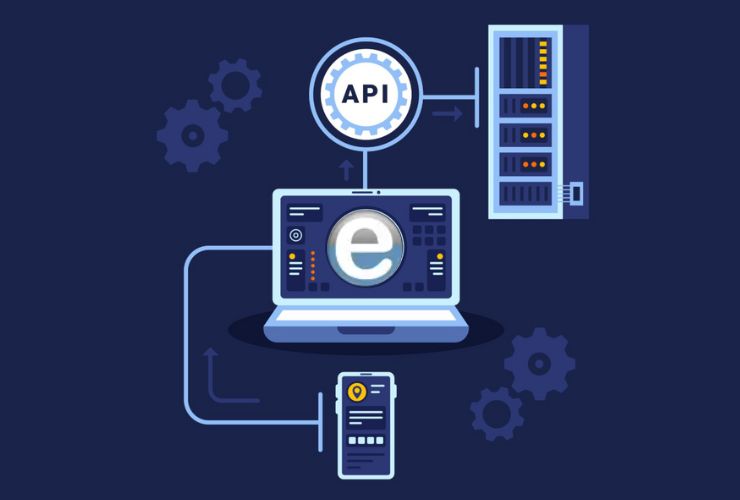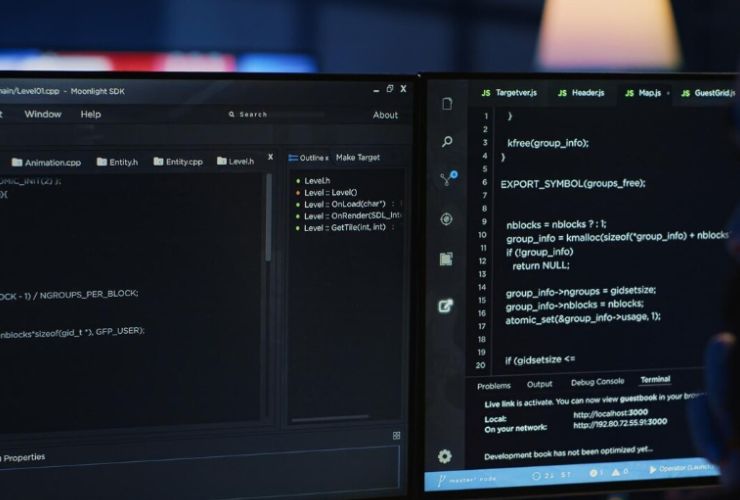Node.js is a strong and popular JavaScript runtime environment that enables developers to create scalable, high-performance applications, particularly for web servers and real-time programs. Its non-blocking I/O and event-driven programming make it the perfect tool for software development in the contemporary world.
But like any strong tool, it has a learning curve. Most newbies are victims of typical traps that can slow down progress, introduce bugs, or create inefficient and insecure code. In this blog post, we guide you through the 10 most common Node.js newbie mistakes and provide practical advice on how to overcome them and write more efficient Node.js.
1. Blocking the Event Loop
One of the major strengths of Node.js is the fact that it is asynchronous, non-blocking. But many newbies employ synchronous code such as fs.readFileSync, or do CPU-bound work on the main thread unaware that this blocks the event loop. If the event loop is blocked, the whole application is unresponsive.
This error will cause your application to slow down or crash under load. The better practice is to use async functions all the way through and offload heavy tasks to worker threads or background services. Understanding how the event loop works is the most important aspect of successful Node.js applications.
2. Bad Error Handling
Error handling is vital in any application, but particularly in Node.js due to the async operations that result in unexpected results. Most new users overlook errors entirely or misuse try/catch, resulting in unhandled promise rejections or process crashes.
It is great to employ a uniform error-handling approach throughout your codebase. Always catch promise rejection with .catch() or inside try…catch blocks while using async/await. Global rejection listeners and unified error-handling middleware are also very important in big applications to catch and log all the errors efficiently.
3. Not Using Environment Variables
Hardcoding environment or sensitive data like database credentials, API keys, and secret tokens into your source code is a terrible practice. This is not only an insecure thing to do, but it also makes your application difficult to configure for other environments (development, staging, production).
Applying environment variables makes you decouple configuration from code. You can handle these variables with dotenv and other libraries through a .env file, which makes your application secure and deployable across various environments.
4. Disregarding Security Best Practices
Security is one that is most often neglected by beginners, but it is an important part of developing any Node.js application. Applications are exposed to attacks like SQL injection, cross-site scripting (XSS), cross-site request forgery (CSRF), and so much more if security protocols are not in place.
Using middleware like helmet can help lock down HTTP headers. Input sanitizing, authentication, authorizing, and limiting sizes of request payloads are critical in constraining attack surfaces. Keeping dependencies up to date and checking for vulnerabilities with tools like npm audit is also crucial in maintaining a secure codebase.
5. Misuse of Middleware in Express.js
Express.js is the most used framework of the Node.js platform. Express Middleware handles requests, validates things, authenticates users, and a lot more. Beginner developers misuse middleware by putting them in the wrong places or failing to call next(), which breaks the flow of the application.
Middleware must be applied consistently and sensibly. To illustrate, the authentication must occur before to secure route handlers and error-handling middleware towards the end. Organizing your middleware properly can go a long way in making your application more maintainable and functional.
6. Not Organizing Projects Well
In extremely small projects, it doesn’t hurt to put everything in one file. But as a project grows, that becomes impossible. A messy codebase is difficult to debug, test, or expand your application and doesn’t welcome others to work with you.
A well-structured Node.js application typically organizes code into modules such as routes, controllers, services, and models. Such code modularity makes it easier to read, unit-test, and enable clean architecture. Following a standard folder structure also enables seamless onboarding of new developers.
7. Missing Logging
Although console.log is useful while developing, it falls short in production scenarios. It does not have support for log levels, retention, and correlation with third-party monitoring systems. Due to this, debugging production problems is difficult.
Having a logging mechanism in place with libraries like winston, pino, or others allows you to log events in a formatted manner. They offer logging to files, log levels (info, warn, error), and even centralized logging services for enhanced observability and debuggability.
8. No Input Validation
Failing to validate input on entry is a cause flaw that leads to both functional defects as well as potentially harmful security vulnerabilities. Garbage or malicious input can make your application crash, damage data, or leave the entrance open to attack.
To manage this, use validation libraries like Joi, Yup, or express-validator to enforce data constraints and formats. Validate user or third-party API data before processing it. Input validation should be a part of your development process, not an afterthought.
9. Not Using a Linter or Code Formatter
Clean code is developed without any formatter or linter, and this results in an unstructured and unmaintainable codebase. This is not done by new developers when they work on their own. However, consistency of style is needed in team development, debugging, and code quality management.
Tools like ESLint impose rules and flag common mistakes or anti-patterns, while Prettier ensures your code is neatly formatted uniformly. These tools can be integrated into your code editor or CI/CD pipeline, hence removing friction and improving overall code health.
10. Not Handling Unhandled Rejections
If a promise is rejected and there is no .catch() handler or there is no try/catch block, then Node.js can treat this as an unhandled rejection. In this case, in the older versions of Node.js, this made the application crash on exit; in newer versions of Node.js, unhandled rejections may still create stability problems. They also create warnings.
They have to always catch promise rejections and throw exceptions cleanly away. You can also set global rejection handlers using process.on(‘unhandledRejection’) to catch any undetected errors and log them for future debugging purposes. Your application is now stable and robust.
Conclusion
Node.js is a light, modern, and flexible runtime powering much of the web’s top applications today. But leaving Node.js starts with learning its basic principles and avoiding newbie mistakes. From writing non-blocking code and exception handling to doing security properly and remaining clean in your project tree, these tips are essential to any developer looking to hone their skills.
By taking the time to learn and adopt best practices early on, you’ll not only build better applications but also become a more confident and capable Node.js developer. Avoiding these mistakes will save time, reduce bugs, improve performance, and prepare your application for production use and team collaboration.














